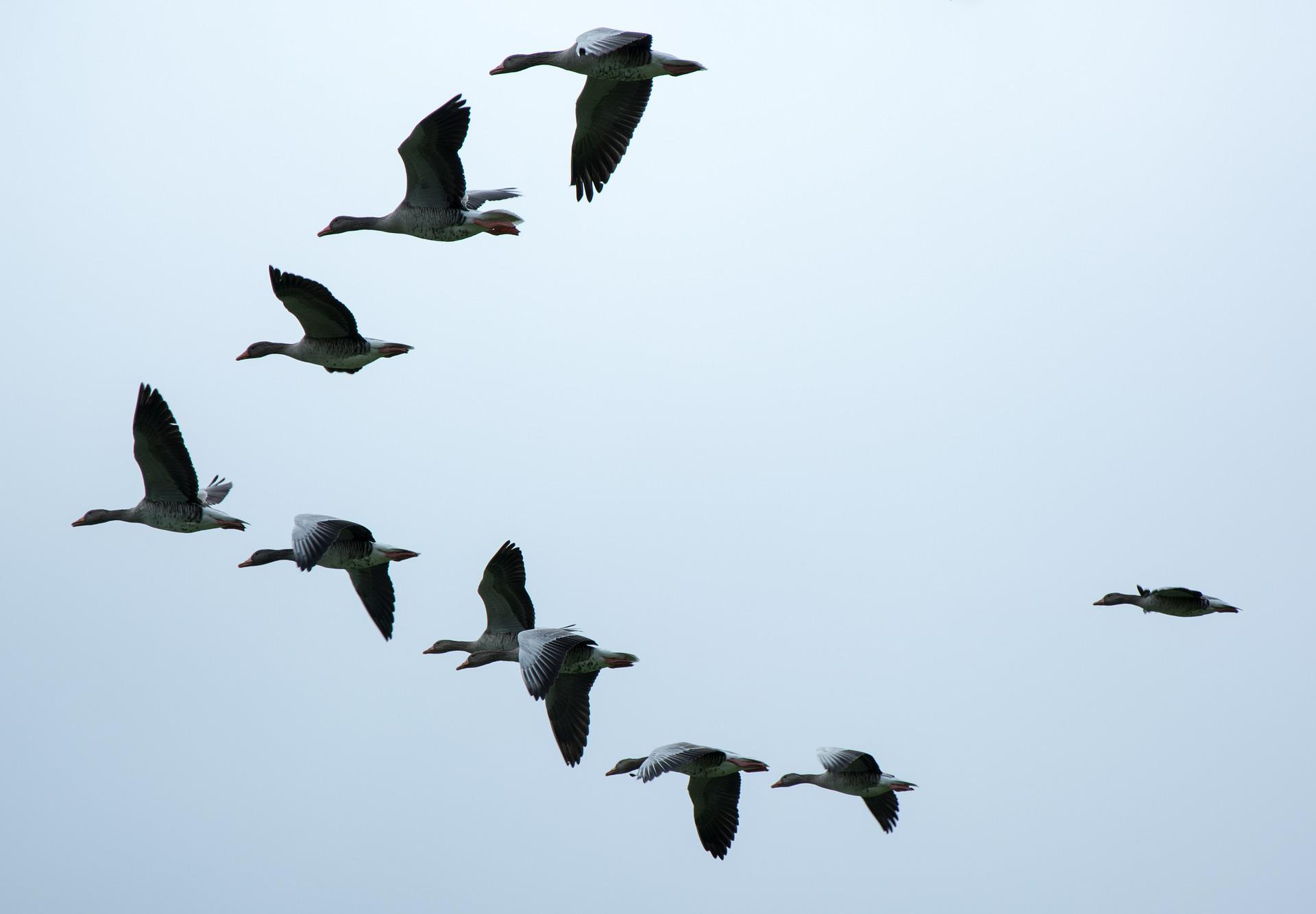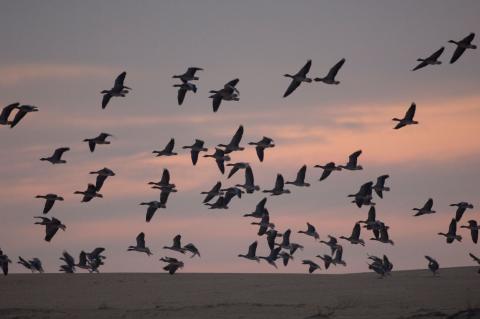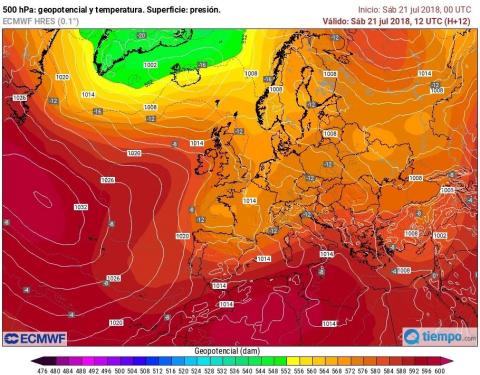Reactions: birds lose morphological diversity due to climate change
Climate change is causing a mass extinction of species, but for birds, this loss of biodiversity has wider implications. In research published in the journal Current Biology, researchers use statistical models to predict that this extinction will decrease morphological diversity among the remaining birds at a faster rate than species loss alone.

Nicolás López - morfología aves EN
Nicolás López-Jiménez
Member of the Society and Territory Unit and delegate of SEO/BirdLife in Asturias
The article shows that there will be a greater risk of extinction for the more specialised birds living in rarer habitats, either because of their restricted distribution or their more specific ecological requirements. The more generalist, cosmopolitan and adaptable species will survive.
The work presented by Dr Emma Hughes and her team provides information to understand that the disappearance of key bird species in the functioning of ecosystems, such as pollinating birds or seed dispersers, could have disastrous consequences for the survival of the plants that these birds pollinate or whose seeds they help to disperse. It also argues that these losses of ecosystem functions could mean that some of the ecosystem services provided by birds could disappear, with human populations also being affected. Furthermore, the article reflects the harsh reality that the loss of morphological and phylogenetic diversity in birds will mean that thousands of years of evolution and adaptation to ecosystems will have disappeared in just a few years, and this irreplaceable genetic heritage will be lost forever.
This is the most comprehensive and up-to-date review of how the current global crisis of biodiversity loss could lead to the disappearance of ecosystem services provided by birds and generate the homogenisation of avifaunal diversity worldwide, analysing the situation in a wide variety of ecosystems across the planet and assessing the possible loss of morphological and phylogenetic diversity by studying the characters of more than 8,400 bird species.
Daniel Sol - morfología aves EN
Daniel Sol
CSIC research professor at CREAF (Centre for Ecological Research and Forestry Applications)
Species extinction is an irreversible event that not only reduces global biodiversity, but also contributes to increased biotic homogenisation and altered ecosystem functioning. In this new study, Emma Hughes and colleagues ask what would happen if currently threatened bird species become extinct: would functional and phylogenetic diversity be reduced, and would biotic homogenisation increase?
Answering these questions is, in theory, straightforward; it only requires estimating the different components of biodiversity for all species and comparing it with what would be expected if the species that are currently most threatened become extinct. In practice, the task is far from easy, starting with the need to obtain information on functional traits for a sufficiently representative number of species.
The present study is based on morphological and phylogenetic information for more than 8,400 bird species, representing about 85% of the species currently living on the planet. By analysing this huge amount of data, the study finds intriguing results. On the one hand, no loss of phylogenetic diversity, i.e. evolutionary history, is detected. This result is, at first sight, unexpected, since we know that some properties that protect species from extinction - such as life strategy or behavioural plasticity - are evolutionarily conserved. And there is also evidence that drastic alterations to natural habitats tend to eliminate the most evolutionarily unique species and favour those belonging to more evolutionarily successful groups.
On the other hand, the new study reveals that the extinction of threatened species would lead to a greater loss of morphological diversity than we would expect by chance. The impact is expected to be greater in some regions of the planet than in others, but the prediction is that the morphology of species in different regions will become increasingly similar. In other words, the extinction of threatened species would further enhance the ongoing process of biotic homogenisation, a process that is also related to biological invasions and has been extensively documented in previous studies.
The importance of Hughes et al.'s contribution lies in demonstrating that human activities not only reduce the number of species, but also have great potential to eliminate unique life forms. The work is not the first to demonstrate this, but it is the first to quantify it at an unprecedented scale and resolution. The study also identifies regions particularly vulnerable to losing biodiversity as a consequence of impending extinctions.
The paper does not delve into the causes of biodiversity loss, even though we know that the traits that favour the response to habitat destruction do not necessarily help respond to climate change or overexploitation. It is perhaps because of the omission of these causes that the study has not detected any loss of phylogenetic diversity. While there is a possibility that loss of morphological diversity may alter ecosystem resilience and resistance, I also question the extent to which the traits studied have implications for ecosystem functioning.
Sergi Herrando - morfología aves EN
Sergi Herrando
CREAF researcher, scientific director of the Catalan Institute of Ornithology and president of the European Bird Census Council
Biodiversity loss is increasingly recognised as one of the most important threats to the sustainability of human societies around the globe. The work of Emma C. Hughes and colleagues provides us with a new perspective on the issue, analysing this loss not in terms of the number of species but in terms of genetic and morphological diversity.
This new approach brings us closer to the functional reality of biodiversity, to the characteristics that allow species to adapt to the environment and play a specific ecological role within ecosystems. To this end, the authors analyse the genetic and morphological diversity of 8,455 species of birds, undoubtedly one of the best-known biological groups. Hughes and colleagues show that the loss of the species most threatened with extinction today would lead to a much greater loss of morphological diversity than would occur at the same time in terms of the number of species or genetic diversity.
These analyses are carried out for the entire planet and thus also reveal where this phenomenon is most alarming. The loss is generalised, but is clearly greater in tropical regions, particularly in South-East Asia. The decline in morphological diversity leads to more homogeneous systems where a few generalist species remain and specialists are disappearing. In other words, biodiversity as a whole is losing the most precise tools to work in ecosystems. Diversity functions such as resilience or the restoration of degraded systems are thus impoverished. To try to give an example that is close to home: the Iberian Peninsula is being ravaged by countless fires in the midst of an unprecedented heatwave. After thousands of years of evolution, some birds have adapted their morphology to the consumption of fruits that they then defecate or hide in good condition for germination, also in burnt areas. Who would repopulate the plant diversity of our forests if they were missing? Are there alternatives at an affordable cost? Will we see the conservation of biodiversity as an investment in our future?
Emma C. Hughes et al.
- Research article
- Peer reviewed
- Animals
- Modelling



